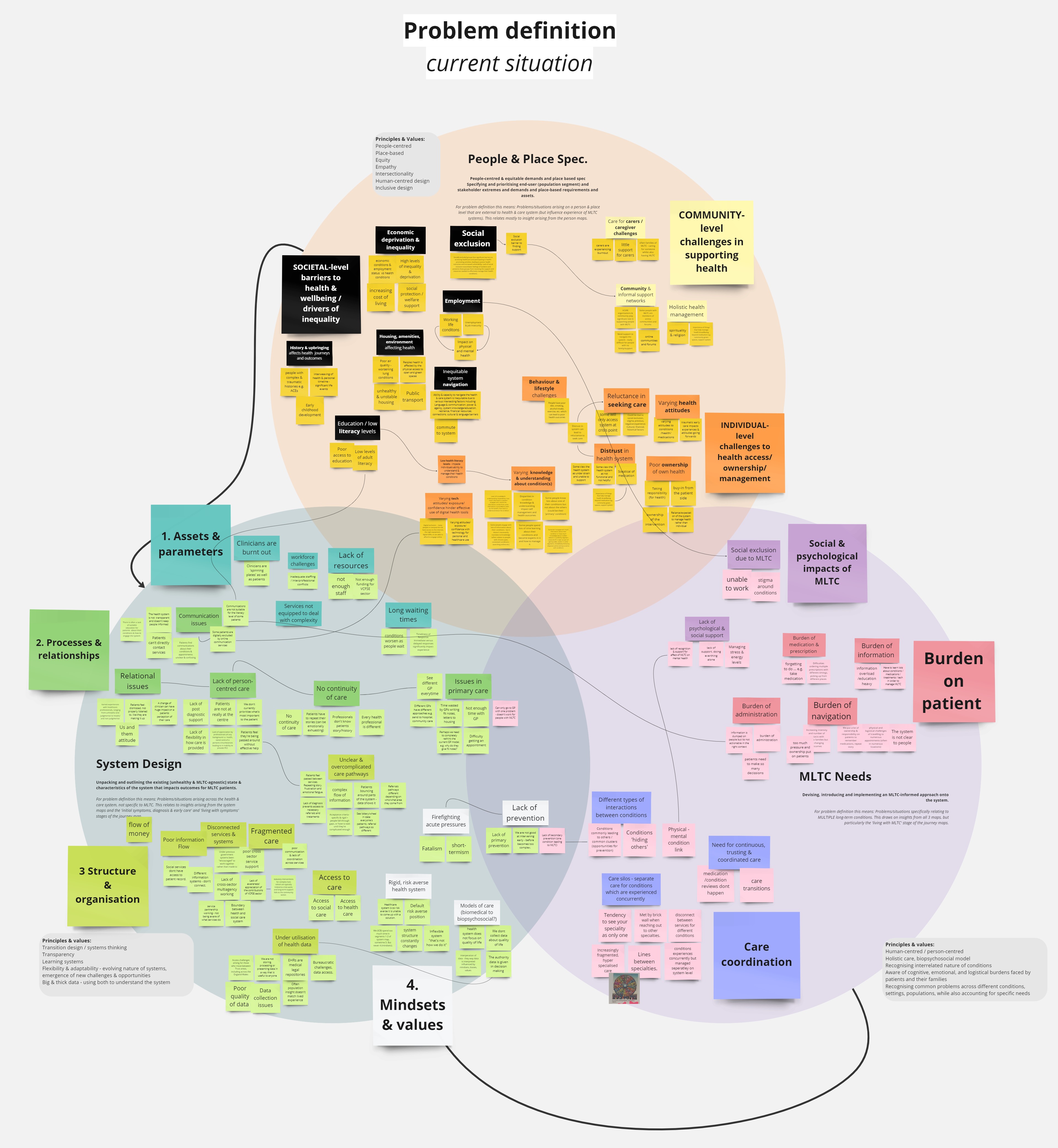Problem co-definition map¶
Visual mapping of problems in Miro.
Overview¶
Numerous interrelated problems in MLTC systems were identified through qualitative and quantitative research in stage 1 and the stage 2 workshop. These were synthesised through an iterative visual mapping process, which led to the development of a living interactive map created using kumu.io. The map sorts problems into three broad categories (people & place, system design, MLTC needs), and maps the connections between them. This map is designed to evolve over time, allowing for the addition or modification of problems and their relationships as new insights emerge or the system changes.
Kumu interactive map:
Application & use¶
Key applications of the interactive map include:
- Stakeholder Engagement: Facilitating discussions among researchers, practitioners, and people with lived experience.
- Priority Setting: Identifying high-impact areas for intervention.
- Strategic Planning: Supporting the development of targeted initiatives to improve MLTC systems and understanding how areas of intervention may be connected.
Results & insights¶
The problem co-definition process has yielded insights into the structural, social, and systemic factors affecting people with MLTC. By mapping problems and their interconnections, we have:
- Identified recurring themes and key pressure points within MLTC systems.
- Enabled a more holistic, context-aware approach to addressing health system challenges.
- Provided a foundation for iterative problem framing and solution development.
As the interactive map continues to evolve, it will remain a vital resource for understanding and addressing the complexities of MLTC systems, ensuring that problem definitions remain responsive to real-world changes and lived experiences.
